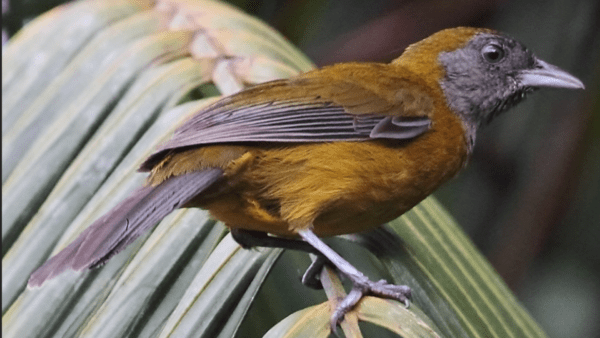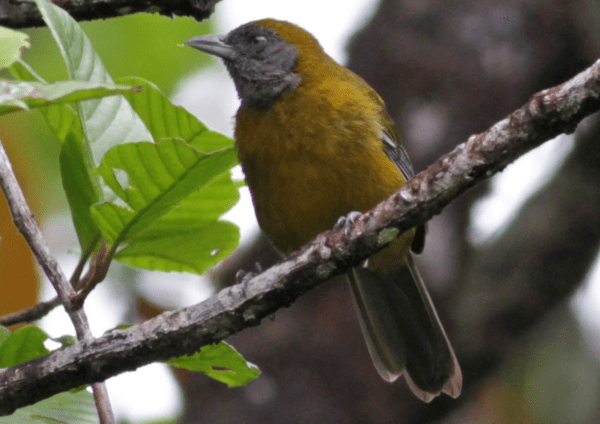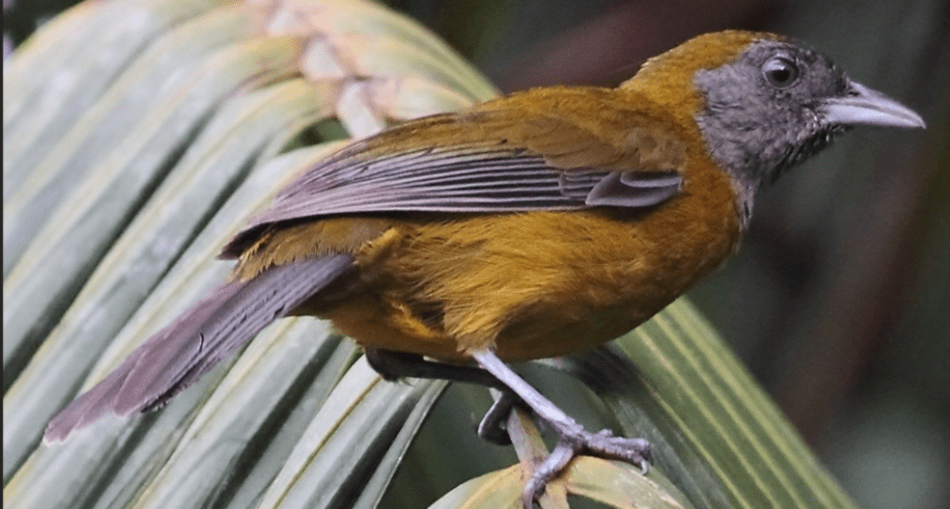The olive-backed tanager (Mitrospingus oleagineus) is a fascinating species of bird with a distinct presence in the Mitrospingidae family.

The Olive-backed Tanager [Photo: Lorenzo Calcaño]
While not as widely known as some of its avian counterparts, the olive-backed tanager plays a significant role in the ecosystem of the tropical forests it inhabits.
TAXONOMY AND CLASSIFICATION
The olive-backed tanager’s classification has seen notable changes in recent years.
Initially grouped with the ‘true’ tanagers in the Thraupidae family, it was later reclassified after scientific research in 2013 revealed distinct differences between the species.
The study proposed that the olive-backed tanager, along with three other species, should belong to a separate family—Mitrospingidae.
By 2017, the North American and South American Classification Committees of the American Ornithological Society accepted this new classification. This was followed by the International Ornithological Committee in 2018.
This reclassification highlights the evolving understanding of avian species and how ongoing research continues to refine the way we categorise the animal kingdom.
SUBSPECIES OF THE OLIVE-BACKED TANAGER
The olive-backed tanager has two recognised subspecies: the nominate Mitrospingus oleaginous and Mitrospingus oleaginous obscuripectus.
Both subspecies share similarities in their physical appearance, but subtle differences set them apart.
PHYSICAL DESCRIPTION
The olive-backed tanager is a medium-sized bird, measuring about 19 cm (7.5 in) in length and weighing between 35.5 to 46 grams (1.25 to 1.62 oz).

Photo: Jay McGowan
Its most defining feature is olive-green colouration, which covers the head, back, and mantle.
The forehead and face of the bird are dark grey, transitioning to a paler grey on the throat. The breast is olive-yellow, becoming brighter and more yellow towards the belly.
HABITAT AND DISTRIBUTION
The olive-backed tanager has a very limited geographical range. It is primarily found at the point where Venezuela, Guyana, and Brazil meet.
Its natural habitat is the humid and wet forests on the slopes of tepuis, which are isolated mesas or table-top mountains. These unique geological formations offer the ideal environment for the olive-backed tanager to thrive.
The bird is commonly found at elevations between 900 and 1,800 metres (3,000 to 5,900 feet) above sea level. It prefers primary or secondary forests, which can forage for food in the undergrowth or mid-level vegetation.
FORAGING AND FEEDING BEHAVIOUR
The olive-backed tanager is an active forager, primarily feeding on insects and fruit.
It is often seen hopping clumsily through vegetation, using its stout silvery-grey bill to probe into epiphytes, dead leaves, and branches in search of food.
The bird is known for its noisy foraging habits. It typically moves in flocks of up to 20 individuals. These flocks may consist solely of olive-backed tanagers or be part of mixed-species flocks that include other bird species.
When hunting for insects, the olive-backed tanager may perform short and awkward sallies (aerial foraging manoeuvres), though it is more commonly seen foraging within vegetation.
BREEDING BEHAVIOUR
Unfortunately, very little is known about the breeding habits of the olive-backed tanager.
No detailed studies have been published regarding its breeding season, courtship rituals, or nest-building behaviour.
VOCALISATIONS AND CALLS
The vocalisations of the olive-backed tanager are quite distinct. Its song is often described as a ‘zweee-eet?’ or ‘zwee-er-eet?’ sound, which it repeats while foraging.
Additionally, the bird produces thin, high-pitched calls. However, one of its most distinctive vocal traits is a harsh, high-pitched screech that many liken to the sound of fingernails on a chalkboard.
This dreadful call is modulated, as if the bird is being squeezed, and is unmistakable to those familiar with its vocal repertoire.
CONSERVATION AND ECOLOGICAL IMPORTANCE
While the olive-backed tanager is not classified as endangered, its limited range and specialised habitat make it vulnerable to environmental changes.
The Tepui Highlands, where it resides, are sensitive ecosystems that face threats from deforestation and habitat degradation. Protecting these habitats is crucial for the survival of not only the olive-backed tanager but also countless other species that depend on this unique environment.
References
- https://en.wikipedia.org/wiki/Olive-backed_tanager
- https://birdsoftheworld.org/bow/species/olbtan1/cur/introduction
- https://ebird.org/species/olbtan1







